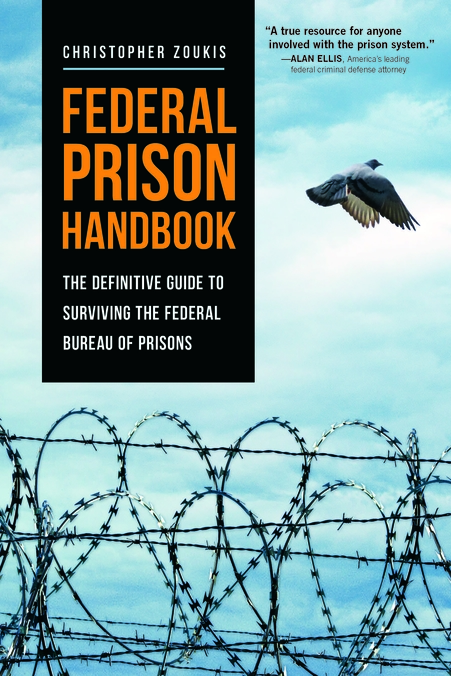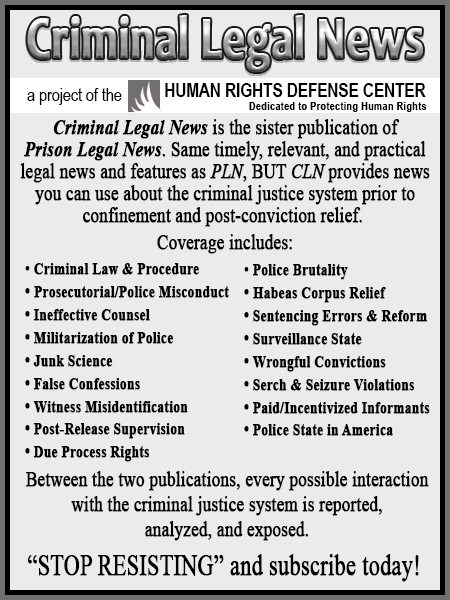New York Court of Appeals Declines to Adopt Per Se Rule That Handcuffed Person Is Always ‘In Custody’ for Miranda Purposes, but Holds the Handcuffed Defendant Was ‘In Custody’ and Suppress Incriminating Statements
by Douglas Ankney
The Court of Appeals of New York declined to adopt a per se rule that a handcuffed person is “in custody” for purposes of Miranda v. Arizona, 384 U.S. 436 (1966). Nevertheless, the Court held that the handcuffed and un-Mirandized defendant was in custody for purposes of Miranda, so incriminating statements that he made must be suppressed.
Acting on a tip from South Carolina police that Ramon Cabrera was transporting firearms into New York without a New York State Carry Permit (“NYS Permit”), Detective Kevin Muirhead and Lieutenant Peter Carretta of the New York City Police Department and Special Agent Adam Schultz of the Bureau of Alcohol, Tobacco, Firearms and Explosives staked out the home of Cabrera’s mother. When Cabrera arrived at about 10:00 p.m., the officers pulled in behind his vehicle.
As Cabrera exited his vehicle, the officers approached him and identified themselves as police officers. In response to Muirhead’s questions, Cabrera identified himself and explained that the home belonged to his mother. Cabrera was handcuffed at that point. When asked for identification, Cabrera directed the officers to his wallet in his car’s console. When removing Cabrera’s driver’s license, the officers observed a Florida Concealed Carry Permit and asked whether any firearms were in his vehicle. Cabrera told them there were three handguns and a rifle in the trunk and gave them permission to open the trunk. Upon opening the trunk, Muirhead observed a rifle. He asked Cabrera if he had an NYS Permit, and Cabrera answered “no.” Cabrera was placed under arrest and police ultimately recovered a rifle, three handguns, and several boxes of ammunition from the trunk of his vehicle.
Cabrera subsequently moved to suppress the statements he had made while handcuffed and the evidence removed from the vehicle. He argued that he “had been placed in custody when confronted by three officers who immediately handcuff[ed] him, and that the officers failed to read him his Miranda rights prior to questioning him.”
The trial court denied the motion, explaining that handcuffing “ensured the officers’ safety and did not transform the encounter into a full-blown arrest requiring probable cause.” Cabrera pleaded guilty to one count of criminal possession of a weapon in the second degree and timely appealed. The appellate division affirmed his judgment, reasoning that “the handcuffing did not elevate what was otherwise an investigatory detention to custody for Miranda purposes, and thus the officers did not first have to provide Miranda warnings before questioning Cabrera about the guns.”
On appeal to the New York Court of Appeals, Cabrera argued, inter alia, that he was “in custody for Miranda purposes when he was handcuffed,” and he urged the Court to adopt a “per se rule” that a “handcuffed person is in custody for Miranda purposes.”
The Court observed “Miranda warnings must be administered when an interrogation occurs ‘after a person has been taken into custody or otherwise deprived of his freedom of action in any significant way.’” Miranda. To determine whether a person has been taken into custody, the Court considers “whether a reasonable person innocent of any wrongdoing would have believed he or she was not free to leave,” People v. Paulman, 833 N.E.2d 239 (N.Y. 2005), “and whether there has been a ‘forcible seizure which curtails a person’s freedom of action to the degree associated with a formal arrest.’” People v. Morales, 484 N.E.2d 124 (N.Y. 1985), citing Berkemer v. McCarty, 468 U.S. 420 (1984).
Turning to the facts of the present case, the Court explained “a reasonable innocent person in Cabrera’s position would not have felt free to leave when three law enforcement officers approached him at night, on a residential street, and handcuffed him before questioning him about firearms in his vehicle. The level to which the police restricted Cabrera’s movement was of a degree associated with a formal arrest. Nor does the record suggest that the defendant had any reason to believe that he would be handcuffed for only a limited duration. We therefore conclude that there is no record support for the conclusion of the courts below that Cabrera was not in custody for Miranda purposes.” Thus, the Court held that Cabrera was in custody, and because no Miranda warnings were given, his statements while handcuffed regarding guns in his car and his lack of an NYS Permit should have been suppressed.
Notably, in reaching its conclusion, the Court declined “to adopt a per se rule that the use of handcuffs places an individual in custody for Miranda purposes in all instances.” While it is true that instances would be rare where the use of handcuffs would not lead to a finding of “in custody,” custodial status analysis “is inherently fact specific” in light of the totality of the circumstances, the Court stated. In only one specific circumstance has the Court previously adopted a rule that a person is in custody as a matter of law—when the person is interrogated “at gun point.” People v. Shivers, 233 N.E.2d 836 (N.Y. 1967). The Court cited several decisions from federal and state courts supporting its conclusion that the use of handcuffs is accorded significant weight—but is not dispositive—in determining custody status for purposes of Miranda.
Accordingly, the Court reversed the appellate division and remitted the case to the trial court for a new trial. See: People v. Cabrera, 2023 N.Y. LEXIS 1891 (2023).
Editor’s note: Anyone interested in the issue of excusing the failure to preserve an issue on appeal on the basis of an intervening U.S. Supreme Court decision (effectively, a “futility” exception to the preservation requirement) is encouraged to read the Court’s full opinion. It provides an in-depth examination of the governing New York case law and methodically applies it to the current set of facts.
The Court devoted much of its opinion on the preservation issue. For the first time on appeal, the defendant argued that in light of the U.S. Supreme Court’s decision in New York State Rifle & Pistol Assn., Inc. v. Bruen, 142 S. Ct. 2111 (2022) (rejecting the use of all “means-end” tests when interpreting a Second Amendment challenge to a statute and instructing that the government must “affirmatively prove that its firearms regulation is part of the historical tradition that delimits the outer bounds of the right to keep and bear arms” if it wants to place restrictions on firearm ownership), the New York statute that criminalizes the unlicensed public carry of a loaded firearm—Penal Law § 265.03(3)—is unconstitutional. The defendant did not raise this Second Amendment argument before the trial court, so the Court declined to reach the merits of his unpreserved constitutional claim because he failed to satisfy the “high bar” for excusing preservation. See People v. Baumann & Sons Buses, Inc., 846 N.E.2d 457 (N.Y. 2006); see also People v. Patterson, 347 N.E.2d 898 (N.Y. 1976); People v. Baker, 244 N.E.2d 232 (N.Y. 1968).
As a digital subscriber to Criminal Legal News, you can access full text and downloads for this and other premium content.
Already a subscriber? Login
Related legal case
People v. Cabrera
| Year | 2023 |
|---|---|
| Cite | 2023 N.Y. LEXIS 1891 (2023) |
| Level | State Supreme Court |





